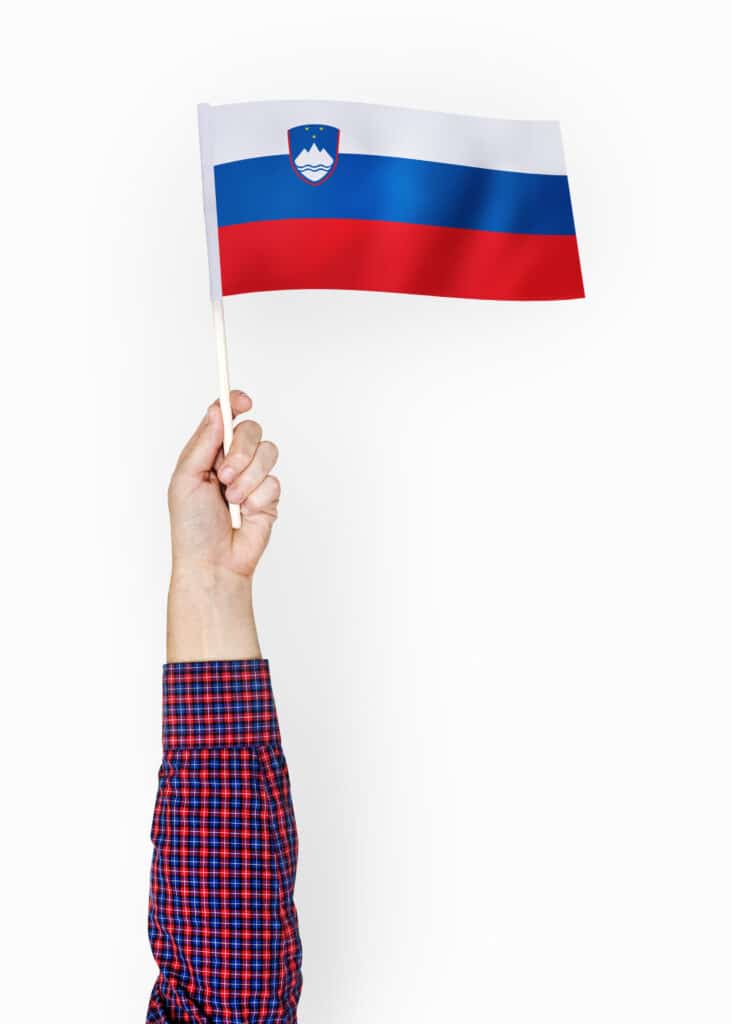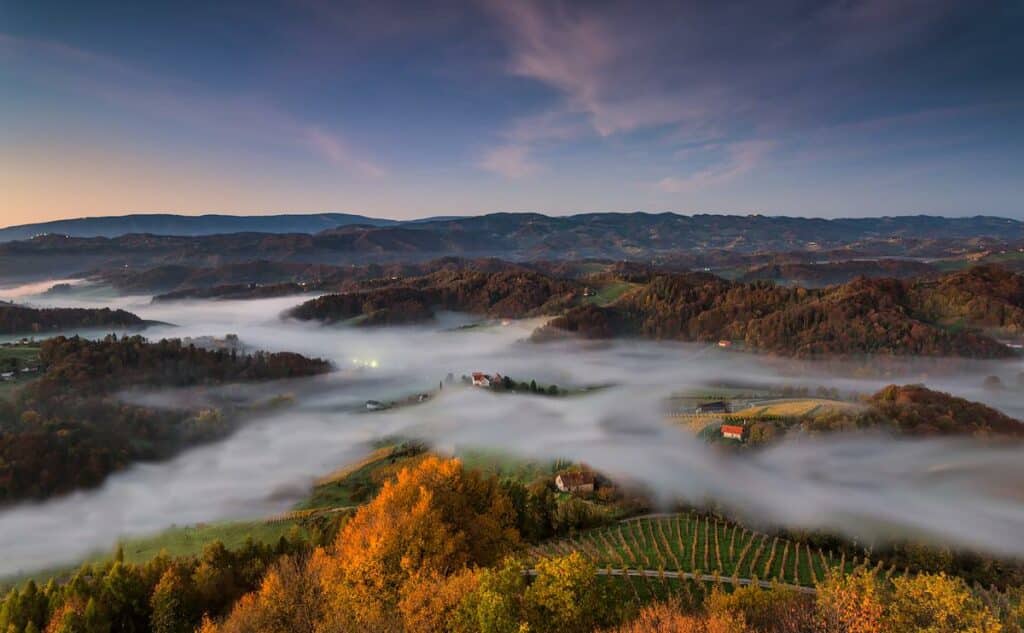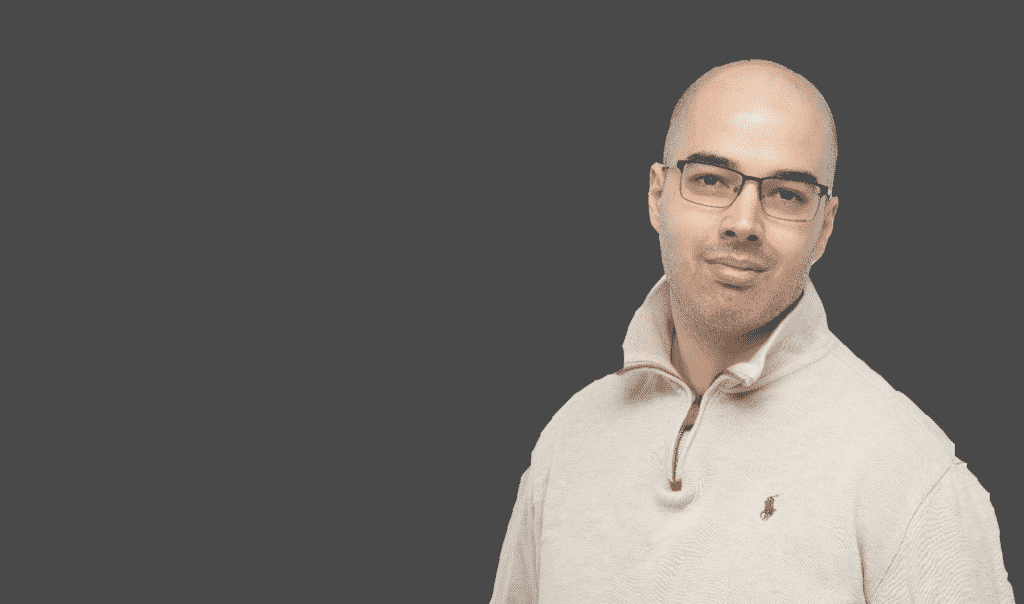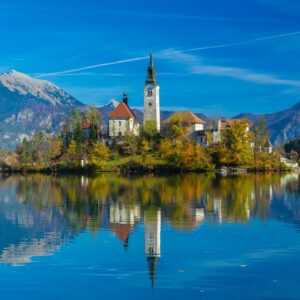Retiring in Slovenia in 2022
If you are looking to invest as an expat or high-net-worth individual, which is what I specialize in, you can email me (advice@adamfayed.com) or use WhatsApp (+44-7393-450-837).
Introduction
In this article, we will discuss vital information about retiring in Slovenia, including visa requirements, costs of living, and best locations.
Even though it isn’t one of the most well-liked places to retire, this primarily Roman Catholic country offers a peaceful retirement amid fairy-tale like forests, charming coastal towns, or quaint cities. If you’re interested in learning how to retire in this nation in central Europe, keep reading.
Retiring in Slovenia: Types of Visas
Slovenia does not offer a retirement scheme for expats who wish to move to and permanently settle in the country. If you’re set in retiring in Slovenia, what you can apply for is a residence permit.
There are two types of residence permits in the country:
- Temporary Residence Permit – required for non-EU citizens who want to live in Slovenia. If you are a holder of this type of residence permit, you are allowed to stay in Slovenia for a period of 12 months.
- Permanent Residence Permit. Only after acquiring a temporary residence permit for five years in a row is the permanent residency certificate made available.
If their stay in the nation does not exceed 90 days, citizens of the European Union (EU) and the European Economic Area (EEA) do not require entry permits or residence permits. However, they must apply for a permanent registration certificate before their 90-day stay is over.
An EU citizen may receive a permanent residence registration certificate for an indefinite amount of time if they have lived lawfully and consistently in the Republic of Slovenia for five years. The requirement of five years of continuous legal residence is also satisfied if a citizen of the EU during that time was not present in the Republic of Slovenia:
- for a maximum of six months in a calendar year;
- once, for a maximum of 12 consecutive months due to significant reasons, such as pregnancy, childbirth, serious ailment, study or vocational training, or posting to another country; or
- due to military service.
If you’re an EU national, you can also obtain an expedited permanent residence registration certificate (meaning, before the five-year requirement period is up) as long as:
- you’re of a Slovenian origin
- you’re a family member of a Slovenian citizen, of an EU citizen, or of a foreigner who has a permanent residence registration certificate issued by the Republic of Slovenia and has legally and continuously resided in the country for at least two years, among other things.
According to Slovenian residency law, business owners and investors are also eligible to apply for a residence permit if they make an investment in a Slovenian company’s operations. A minimum investment of 50,000 euros, net, is required by legislation.
When retiring in Slovenia, you must also make sure that you have adequate financial funds to provide for yourself during your stay in the country.

Retiring in Slovenia: Post Arrival
You must register your residence within eight days of entering Slovenian territory after getting a temporary residency permit.
The administrative unit of your new house in Slovenia is where you register your address.
How to register your residence
It is necessary to provide a valid identification document (ideally a passport) with a photo and proof of residence in order to register your abode, whether it is temporary or permanent.
What are considered proof of residence?
- Evidence of ownership
- Lease or sublet agreement
- Written consent of the owner or co-owner of the residence
- Written consent of the manager of the accommodation facility
Is the temporary residence permit in Slovenia renewable?
You can renew your temporary residence permit one month prior to its expiration date. The process for renewing is the same as the preliminary application.
Retiring in Slovenia: Cost of Living and Housing
Retiring in Slovenia would in general cost you less than if you would retire in the US. For comparison, global cost of living data aggregator Numbeo estimated that you must have about $3,219 in Slovenian capital Ljubljana (at the time of writing) so as to maintain the same standard of life that you can have with $6,900 in Washington, DC. These figures assume that you are renting in both cities.
One of the most well-liked cities in Slovenia for seniors is Ljubljana. Renting a one-bedroom apartment within Ljubljana’s city center costs about 650 euros per month and 523 euros outside that area. The costs for buying apartment within and outside the city center can reach 4,292 euros and 3,171 euros per square meter, respectively.
A meal at an inexpensive restaurant is estimated to cost 10 euros, while a mid-range restaurant can charge 40 euros for a three-course meal for two.
The overall cost of living in the city for a family of four can reach an estimated average of 2,467 euros per month, while a single person can live off 728 euros a month, both excluding rent.
Asset management firm Mercer listed Ljubljana as the 147th most expensive city in the world for expats in its 2022 Cost of Living City Ranking. That’s way lower than New York at the 7th spot, Hong Kong at the top spot, and fellow European city Zurich at number two.
Retiring in Slovenia: Healthcare
The Health Insurance Institute of Slovenia (HIIS) offers universal, enforced health insurance in the country.
The mandated insurance program does not cover all expenditures of medical care, despite the fact that the Health Insurance Institute of Slovenia pays for the majority of medical procedures. In order to obtain additional coverage, Slovenes pay for voluntary insurance.
Public and private organizations that have a concession to offer services that are paid for with public money provide healthcare in Slovenia.
The majority of people choose private treatment since the public sector frequently experiences lengthy and tedious waiting times. Most of them also opt for private health insurance to cover visits to pharmacies and private physicians.
All tax-paying residents and all those retiring in Slovenia can enjoy the coverage provided for by the country’s mandatory health insurance program.
Health insurance might be expensive, but on average it costs less than $300 each month. Insurance often pays in full for doctor visits, and depending on the substance, prescriptions are available for around 10% of what they would cost in the US.
Retiring in Slovenia: Taxes
The income of those who are considered residents in Slovenia are taxed. Depending on one’s salary, income taxes can be anywhere from 16% to 50%. There is also a 25% capital gains tax in the country, which means that you will be subject to taxes if you bring in money or buy and sell property in Slovenia.
Check if your home country and Slovenia have a tax treaty in place. This will help you get out of potential double taxation by both governments on your retirement income.

Retiring in Slovenia: Safety
Retiring in Slovenia shouldn’t be a problem when it comes to security because it is one of the safest countries in the world. In fact, it placed third (along with China) in terms of countries/areas where people feel safest walking alone as per the 2021Law and Order report of analytics and advisory firm Gallup that was based on a 2020 global survey for perceptions of law and order. The country also ranked fourth (the same as Taiwan, Austria, and Portugal) in Gallup’s Law and Order Index.
The capital city of Ljubljana also has a low level of crime risk. The majority of passengers don’t experience crime, but non-violent petty crime can occur in well-known tourist areas.
It’s crucial to remember, though, that crimes can happen anywhere. Overall, it is safe to go all around Slovenia, and there are no places you should avoid seeing while on a tour.
Besides, Slovenia is a secure place to retire because of its excellent healthcare system, which enables access to high-quality medical treatment easy to come by.
Retiring in Slovenia: Best Regions
Central-Slovenia
If you don’t mind the region’s relatively higher cost of living, central Slovenia, with its capital city of Ljubljana, is a good place to consider when retiring in Slovenia. In particular, if you deem yourself to be the type of person who cannot survive without the nightlife and the commotion of the big city life, and if you want to work as an English teacher overseas, then this region must be a good fit for you.
Both old and new can be found in this region, which is a cultural hub. In addition to being rich in tradition, the city has a ton of bike paths and green spaces that will help you stay fit and healthy. You’ll be happy to know that the city’s center area is fully closed off to traffic, allowing you to explore it without having to constantly keep an eye out for approaching cars if strolling through town is your idea of perfect relaxation.
The rural area of central Slovenia is waiting for you outside of Ljubljana. You could experience classic Slovenian village life with a large number of eateries out there while still being close to the capital. This should substantially lower your living expenses compared to staying in Ljubljana on a permanent basis.
Be sure to take in the stunning view that Ljubljana’s castle affords if you opt to call the you’re your new home. From there, you can see both the Triple Bridge and the Dragon Bridge.
Styria
Maribor, the second-largest city in Slovenia, is located in Styria. Due to its convenient location close to the Austrian border, many locals routinely cross it in search of employment or weekend vacations. It is simple to find a decent companion because the downtown area is filled with a lot of classic architecture and charming little cafés and bars.
Lent is one of Maribor’s most beautiful areas if you appreciate the idea of being close to the river. Both foreigners and locals find it to be so. This is also where Old Vine House, home to the oldest grapevine in the world, is situated. It has been in business for more than 400 years as of this moment.
As opposed to Ljubljana, Maribor offers a wide variety of rental homes at significantly lower costs. Therefore, Maribor is a wonderful compromise for those expats who don’t mind downsizing and want to experience Slovenian city life but don’t have the deepest pockets. You can likely traverse it on foot in an hour or less because it isn’t the largest city nearby. You will encounter a specialty store on every corner of the area amid its size.
Once you decide about retiring in Slovenia and opt to settle in Styria, don’t forget to visit Betnavski gozd and the three lakes, which are frequently praised by American expats as a tranquil locale and ideal for a quiet retreat in nature. Sports enthusiasts find it to be one of the top locations as well. Pohorje serves as the go-to location for trekking to burn some of those calories during the rest of the year as well as being a destination to go skiing during the winter.

Slovenia’s Seaside
The modest but beautiful Slovenian seashore is located in the southwest of the country. The largest city there is Koper, which is also one of Slovenia’s oldest cities and is frequently referred to as a town of a hundred suns. This region is a good option for retiring in Slovenia if you enjoy the water.
Even after you’ve lived in Koper for a time, it’s simple to become lost in the maze of tiny streets. A basic flat will cost a minimum of 400 euros per month, which is still on the low end of prices in the area. This backdrop even gets worse during summers when prices soar as flocks of tourists visit the city. Two smaller Slovenian seaside cities – Izola and Piran – go through a similar pattern.
Most expats report a great quality of life, so if you can get beyond the challenges with housing, you’ll definitely love it here. As one might anticipate from a location like this, the food is good, with seafood being one of its strongest points. The good news is that Portorož, a resort town, is only 20 minutes away if you’re looking for a wild nightlife because Koper lacks a lot of it.
The wind is the biggest issue that all expats who reside in this part of Slovenia complain about. Even while the temperatures nearly never drop below freezing, what seems like a refreshing breeze in the summer may turn almost brutally chilly in the winter.
Slovenia’s Alps
If you’re retiring in Slovenia to lead a more active lifestyle, your hiking and climbing objectives can be met in the Gorenjska region of the Slovenian Alps. Triglav, Stol, and Grintavec – the mountains that every expat comes here to conquer – are three spots in particular that you should pay great attention to.
Kranj is the area that is closest to a city, and it is here that you will probably locate housing if you are an expat. While the capital city is only a 30-minute drive away in case you need something, Kranj is unquestionably more economical to live in than the former.
The buildings in Kranj are magnificent. The Khislstein castle, which doubles as a concert venue and an outdoor stage for theatrical productions and other cultural events, is located close to the town wall. You may discover all there is to know about Kranj and its breathtaking 6000-year history in the Museum of Gorenjska. You might also find visiting the St. Cantianus Gothic church to be quite enjoyable.
The first thing you’ll notice in Gorenjska as a resident is its serene natural setting, followed by its rich and vibrant food scene. Consider retiring out here if you don’t mind a little bit of a chill and if you enjoy culture and mountaineering.
Northeast
One of the most economical places you could find when retiring in Slovenia is Prekmurje, located to the northeast of the country. Living in Prekmurje is one of the sanest decisions you can make if you’re the kind of expat who doesn’t mind the general lack of nightlife and social activities and is primarily interested in minimizing your living expenses while connecting with nature.
For comparison, you will only pay 5 euros for a restaurant meal in Prekmurje in Slovenia, although it will on average run you under 10 euros in other parts of the country. Rent can be incredibly cheap here as well if you’re okay to leave Murska Sobota and reside in rustic areas.
The main city of Prekmurje, Murska Sobota, is home to a number of notable sites, such as the charming Evangelical Church, the Rakian Mansion, the Tigeli Beekeeping Museum, the Castle Beltinci, and others. Meanwhile, keep Moravske Toplice in mind if you crave to relax at the spa. Be sure to try some Prekmurska gibanica in the area as well. It is a delectable traditional Slovenian dessert from Prekmurje.
Prekmurje is, in general, all about tradition and leading a modest life. In other words, this is the center of Slovenia’s agriculture, and if you’re an expat, you’ll feel as though there is an endless amount of space, making it the ideal location for a stroll around the countryside.
Retiring in Slovenia: Bottom Line
No matter whatever region you choose, retiring in Slovenia will give you access to a nearly crime-free environment and affordable housing across the board. And if you decide it’s not for you, there’s nothing stopping you from packing up your belongings and leaving; Slovenia is a small nation, so the journey won’t take long. No matter where you go, you’ll be able to start a conversation because the vast majority of Slovenians have no trouble speaking basic English.
Ultimately, you should take into account your individual needs and desires when determining where to settle in. Consider the benefits and drawbacks before choosing a location. Take your time when making decisions.
Pained by financial indecision? Want to invest with Adam?

Adam is an internationally recognised author on financial matters with over 830million answer views on Quora, a widely sold book on Amazon, and a contributor on Forbes.




Please I have read different articles on requirements to retire to Slovenia from Nigeria.
Please could you assist by providing an authentic requirements.
Thank you.
We don’t help directly with this. The article is for informational purposes only. We do help with visas for some other countries. You can email me if you like – advice@adamfayed.com